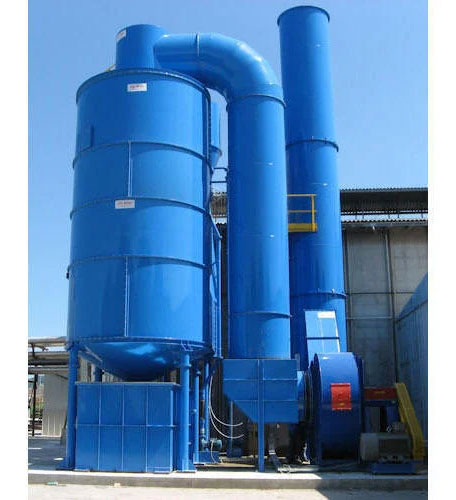Scrubbers work by using a combination of liquids (typically water) and gas flow to remove pollutants, such as particulates and gases, from the exhaust streams of industrial processes. The fundamental operation of scrubbers can be broken down into several key stages, depending on the type of scrubber. Below is an explanation of how the two primary types of scrubbers work:
Particulate Collection Scrubbers (Type 1)
Venturi Scrubber:
This type of scrubber uses a high-velocity gas stream and water to collect fine particulates. Here's how it works:
- Gas Entry: The polluted gas stream enters the scrubber and passes through a narrow throat (restriction) in the venturi section.
- Water Atomization: Water is introduced at the restriction point, and the high gas velocity atomizes the water into fine droplets.
- Scrubbing Action: The fine water droplets collide with and capture particulates in the gas stream, effectively removing them.
- Separation: The gas and water mixture is passed into a cyclonic separator, where the heavier water and particulates are separated from the gas.
- Water Reuse: The collected water (now with the captured pollutants) flows back into a pumping tank for reuse in the system.
- Clean Gas: The cleaned gas exits the scrubber, free of particulates.




